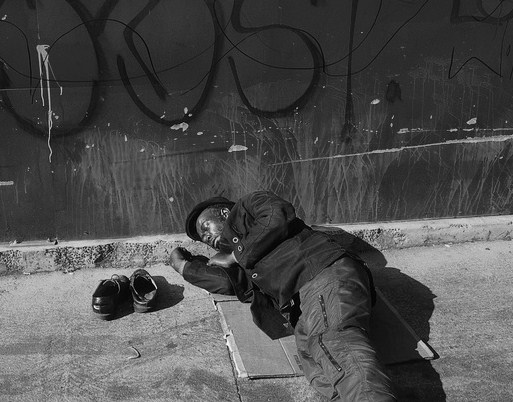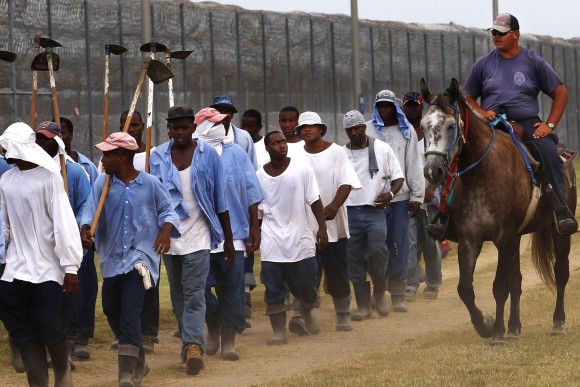The United States’ Obscene Wealth Inequality
By Gilbert Mercier and Dady Chery
In the past 33 years, the United States has become a study in blatant and obscene contrasts between the rich and poor. Although FDR’s New Deal helped to lift the country out of the Great Depression and to establish the social and economic policies and standards that created a middle-class, the pendulum shifted in 1980. America’s social fabric has been eroding ever since. The era from the end of World War II to the late 1970s will be remembered, with nostalgia, as the golden years of America’s middle class. It was a time of optimism, opportunities and expansion, when hard work could legitimately pay off in the form of the middle-class version of the American dream: a bread winner who could, on a single salary, support an average family of four and provide it, among other things, a car, and even a modest home with white picket fence. Those days are long gone.
Super-rich: Since 2003 their combined net worth has doubled to $2 trillion
The September 16, 2013 update of Forbes magazine’s super rich reported that the 400 wealthiest Americans are worth just over $2 trillion. This is equal to the gross domestic product (GDP) of Russia and represents a doubling of their combined net worth since 2003. Thus, five years after the financial crisis bankrupted many in the US and the globe, the rich are getting richer: a lot richer. The average net worth of the billionaires on the Forbes 400 list is an astonishing $5 billion: an increase of 800 million in one year. In fact, the rich have become so wealthy that 61 billionaires failed to make the cut; they were omitted from Forbes’ list because, to enter the exclusive club of the super rich in 2013, one’s net worth must at least be $1.3 billion.
The US Congress votes for deep cuts in food stamps
Simultaneously with celebrations by Forbes and other business magazines about who regained his place as Number One, or who made the top 20 this year but not last year, and which wealthy 83-year-old married his 42-year old consultant, and what sorts of mansions the super rich favor nowadays, the US House of Representatives announced its intention to cut the food stamps program, also called the Supplemental Nutrition Assistance Program (SNAP), by a whopping 50 percent: that is, $40 billion. Currently 50 million Americans need food stamps to survive, and about half of them are children. Although it is unlikely that the US Senate will pass such a deep cut, its discussion has had the effect of muting all earlier debates about a cut of 10 percent or less. Much is currently made of the fact that the food stamps program has become exceptionally fat in the past few years and is presumably in need of a trim. Such arguments almost always omit any mention that this expansion was done to alleviate the social impacts of the 2008 recession compounded by the dismantlement of the Aid to Families with Dependent Children (AFDC, or welfare) program in the 1990s.
WalMart: Home of the modern-day lords and their serfs
Contrary to the use of food stamps by the needy in the past to supplement assistance programs for those who could not work, many working families now rely on SNAP to survive, because the income from their jobs keeps them at or below the poverty level. This is especially so for those who work in the big retail chains. For example, the salary of a WalMart “Sales Associate” ranges from $7.47 to $10.77 per hour. Consequently those with full-time status, defined as being employed for 34 hours per week for 52 weeks per year, earn only $13,200 to $19,000 per year: a salary that puts them well below the poverty level of $23,000 per year for a family of four. Nevertheless, WalMart has fought all proposals to raise the minimum wage in the US.
Given that WalMart currently employs 1.2 percent of the US workforce in the private sector, one could say that a significant part of SNAP serves to subsidize Walmart. That is not all. Many WalMart employees also rely on Medicaid and other government programs for anything approaching a decent living standard. Indeed, taxpayers are estimated to subsidize WalMart to the tune of $900,000 per store, per year. By contrast to the dire poverty of those who generate WalMart’s wealth, if we put aside Forbes’ official list of the super rich and do some of our own math, it immediately becomes evident that “Number One” (Bill Gates) and “Number Two” (Warren Buffet) are rather puny compared to Walmart’s owners. Specifically: Christy, James, Alice, and S. Robson Walton hardly stand out in the Forbes gallery of the super rich at the relatively modest rankings of “Number Six” through “Number Nine,” respectively, but their net worth adds up to an obscene $136 billion: that is, $6 billion more than the fortunes of Gates and Buffet combined.
Charity for profit
As for the nominal Number One: his fortune seems to defy all physical laws, having grown from $9.35 billion in 1994, when he became a philanthropist, to $72 billion today. Unlike Gates, “Number Two” only recently jumped on the bandwagon of tropical-disease eradication. His fortune has merely stayed the same despite his various donations; but being the world’s “most successful investor,” profits will surely flow to Buffet from his pledge to give away his fortune to the Bill & Melinda Gates Foundation. True, it is difficult not to make money when one is a billionaire, given the power and access that money buys. But is this all that has grown the Gates fortune at such a phenomenal rate? How could one fail to make a profit from bogus philanthropy projects to eradicate tropical diseases when one is able to support the development of vaccines, invest in the companies that manufacture them, pressure governments throughout the world into adopting them into their vaccination programs, and control all publicity about them? After all, one of the most valuable things money buys is the control of language and information.
Land of inequality
The US House of Representatives has declared that it will only give food assistance to those who work for more than 20 hours per week. In effect, this will formalize poverty for US workers. Along with the plan to cut food stamps, there will be coercive requirements for drug tests. Thus people who are poor will be infantilized and dehumanized. Unlike the poor of the past, who were treated with dignity and could dream of a better future for their children, today’s poor will have no hope at all. Their children will not attend college. At best, they might also get a minimum-wage job.
Beyond the cold reality of numbers and statistics, there is nothing abstract about the shameful poverty that affects 50 million people in the US: feeling the pain in your guts when you don’t have enough to eat; seeking a safe shelter for the night when you are a homeless woman with two kids; and, when you still have a roof over your head, constantly struggling to keep food on the table and pay the bills. Poverty is not an abstraction at all, or a pissing contest like that of the mega rich who fight to be Number One or Number Two. Poverty is an inhuman burden that nobody should have to experience. In the past three decades, in the United States of America, the middle class has become poor and the have become poor destitute; meanwhile, the disgustingly rich have wallowed in their insatiable greed, making money with money and exploiting their new serfs.
Editor’s Note: Photographs one, three, four, and five by Emiliano. The artwork depicted in photograph three is by Steve Lambert. Photograph two is by Tim Regan, photograph seven by USDA, and photograph eight by Robert Huffstutter.
Related Articles






















2 Responses to The United States’ Obscene Wealth Inequality
You must be logged in to post a comment Login